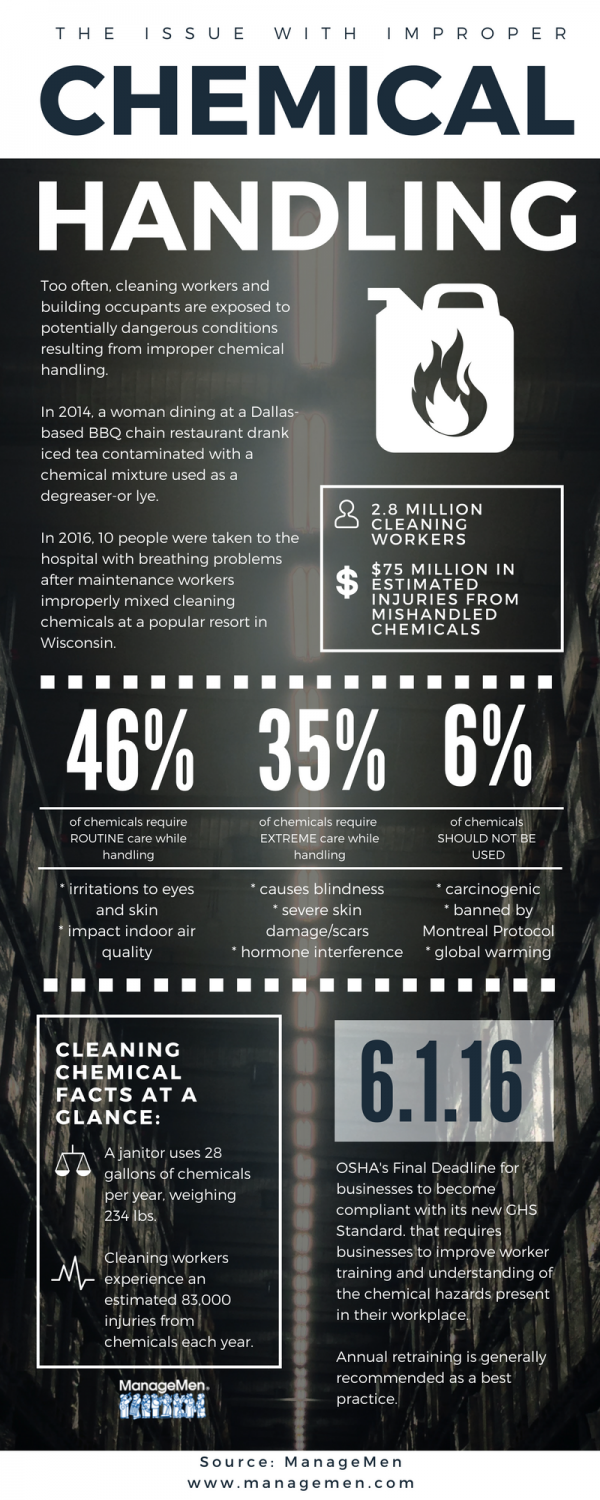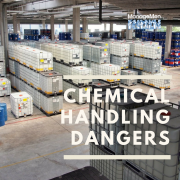Safety Month Continued: The Dangers of Handling Chemicals [INFOGRAPHIC]
We hear the stories too often: someone improperly mixes cleaning chemicals, which leads to a strange odor. Everyone evacuates the building. People are taken to the hospital for precautionary measures, but in a best-case-scenario, there’s no injury.
But in some cases, there are injuries. Like the chemical mixing incident where an Idaho woman drank iced tea mixed with a cleaning solution and nearly died.
The EPA reports that as many as 2.8 million people in the cleaning industry are exposed to potentially dangerous chemicals each day. And if their job requires that they handle chemicals, it’s up to the employer to make sure they know what they’re doing.
OSHA’s revised Hazard Communication Standard (HCS 2012) requires organizations to provide training on the following:
- Methods and observations to detect the presence or release of a hazardous chemical in the work area.
- Measures employees can take to protect themselves from these hazards.
- Details of the hazard communication program developed by the employer, including an explanation of the labels received on shipped containers and workplace labeling system, the SDS and how employees can use the appropriate hazard information.
While the new standard requires training when new personnel assigned to work in a specific area or when a new health or physical hazard is in place, employers can further reduce risk of an incident resulting from improper chemical handling by providing ongoing training and making sure key personnel have demonstrated their understanding of key handling protocols.
Handling chemicals can be extremely dangerous when people don’t know what they’re doing. We’ve put together an infographic to share at your next safety meeting so cleaners understand the potential risks and take the time to understand best practices for handling.




